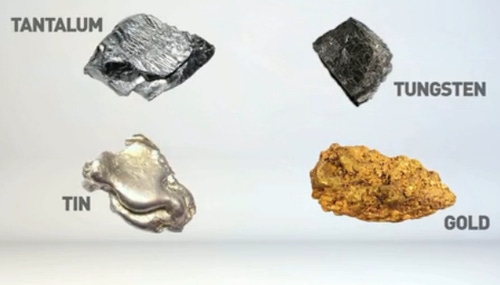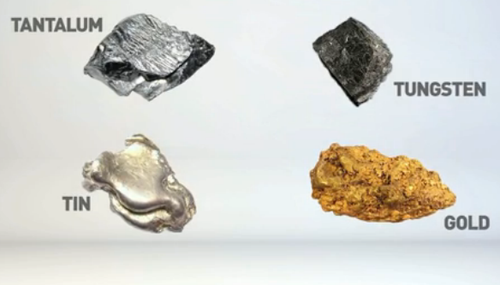Turning to Software to Identify Conflict Minerals in the Supply Chain
July 14, 2015

Under the Dodd-Frank Act, public companies in the US now must report to the Securities Exchange Commission (SEC) their use of so-called "conflict minerals," in an attempt to weed out illicit trade of the minerals that produce tin, tungsten, tantalum, and gold and which funds warlords in the Democratic Republic of Congo (DRC) and surrounding countries. Companies are not required to cease using these minerals, but they must report their use. The European Parliament is soon likely to issue a directive to companies operating in the EU that effectively eliminates their use of conflict minerals by requiring them to certify that their supply chains are clean. It's not an easy task to find alternative sources, as mining interests often smuggle the minerals to smelters outside the DRC to avoid the conflict minerals label.

Conflict minerals reporting is a due diligence task heavy in administrative work and research. In the US, a manufacturer submits its conflict minerals reporting template (CMRT) provided by the Conflict-Free Sourcing Initiative (CFSI) to collect information about tin, tungsten, tantalum, and gold -- or 3TG -- in its supply chain. It then sends the CMRT to its suppliers, who fill in the relevant information and send the template back. The manufacturer then reviews the CMRT from each supplier, aggregates the data, and reports to the SEC based on the responses. As a manual process, it's a headache at best and a nightmare at worst.
Some companies are turning to regulatory authorities and organizations that make efforts to keep track of the conflict minerals supply chain, from the mines, to the smelters, to the shipments to manufacturers. These include private companies, the EU's RoHS directive, and REACH regulation. As well, many organizations are using software solutions that can help aggregate the steps and ensure compliance. These solutions can also help uncover missing information.
MORE FROM DESIGN NEWS: Manufacturers and Companies Are Struggling with 'Conflict Minerals' Reporting
"Technology can help automate and manage this process," Jim Sweeney, senior director of solution management for PTC, told Design News, "from sending out the requests with the CMRT, [to] tracking responses and when items are overdue, [to] validating the CMRT to ensure it's filled in correctly, [to] aggregating and reporting across smelters, suppliers, supplier parts, and even against a company's parts or specific bill of materials."
In a way, the software can help "crowdsource" the data collection process. Many organizations have a portion of the information they require. They are hampered by gaps in data, but other companies or associations can help fill them. Sweeney said technology can help determine the scope of suppliers that use 3TG minerals or consult non-government organizations (NGOs) that track them.
"This can be done by leveraging materials content information from other regulations like REACH and RoHS," he told us. "Many companies are already collecting materials information from initiatives such as REACH, RoHS, and customer disclosures. This information can then be used to identify any products that have 3TG or its derivatives. This can significantly reduce the scope of suppliers that need to be surveyed."
MORE FROM DESIGN NEWS: US Faces Off With China Over Rare Earths
PTC uses several sources, including some of its own customers such as Motorola, Microsoft, and UTC; industry associations such as IPC (Association Connecting Electronics Industries), CFSI, and AIA (Aerospace Industries Association); key influencers such as The Elm Consulting Group International and the Schulte Roth & Zabel LLP law group; and various government agencies.
By automating the compliance process and essentially turning it into a managed service rather than a laborious in-house paperwork storm, organizations can save time and reduce complexity and the risk of non-compliance. At the same time, software solutions allow companies to engage in broad risk analysis that can lead to better decisions in product design and management.
Tracey Schelmetic graduated from Fairfield University in Fairfield, Conn. and began her long career as a technology and science writer and editor at Appleton & Lange, the now-defunct medical publishing arm of Simon & Schuster. Later, as the editorial director of telecom trade journal Customer Interaction Solutions (today Customer magazine) she became a well-recognized voice in the contact center industry. Today, she is a freelance writer specializing in manufacturing and technology, telecommunications, and enterprise software.
About the Author(s)
You May Also Like
.jpg?width=300&auto=webp&quality=80&disable=upscale)


